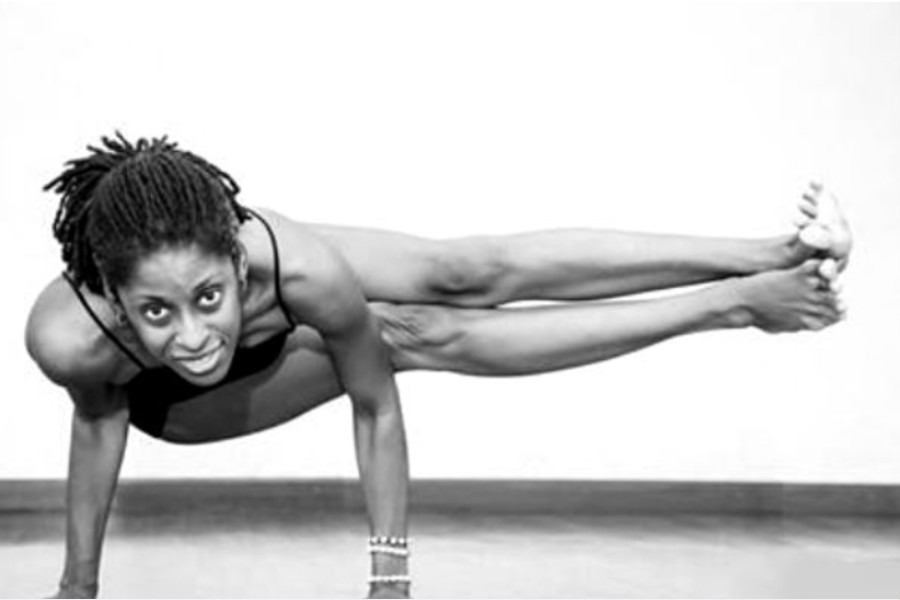
Are you struggling to see muscle gains despite putting in hours at the gym? It’s frustrating when your hard work doesn’t seem to reflect on your physique.
The key could be optimizing your training split. By following a few simple yet effective strategies, you can maximize muscle growth and take your fitness journey to the next level. In this blog post, we’ll explore how you can train smarter and not harder for maximum muscle gains. So let’s dive right in!
Train Each Muscle Group Multiple Times Per Week
This means that you should be targeting every major muscle group at least two to three times a week, depending on your fitness level and goals. Ranging from a tricep dip to push-ups and pull-ups, there are numerous bodyweight exercises that can effectively strengthen and tone your upper body muscles, if that is what you specifically want to work on. The same would apply to any other group of muscles you want to focus on. When you work out a specific muscle group more frequently, it helps to increase protein synthesis which results in faster muscle growth. For example, if you’re looking to build bigger biceps, consider dedicating two days solely for this purpose – one with heavier weights and lower reps and the other day with lighter weights but higher reps. It’s also essential to vary exercises so that you don’t hit plateaus. If all you do are standard curls for bicep development, then eventually your muscles will become accustomed to it leading to fewer gains. Instead, incorporate different types such as hammer curls or preacher curls into your routine. Plus, focusing on multi-joint exercises like squats or bench presses during these workouts allows for greater overall progress since they require more energy output from various areas throughout the body.
Focus on Compound Exercises
Compound exercises are multi-joint movements that work for multiple muscle groups at the same time. They are more effective than isolation exercises in promoting muscle growth and strength gains. The reason why compound exercises are so effective is that they allow you to lift heavier weights and stimulate more muscle fibers than isolation exercises. For example, a barbell squat works not only your quads but also your glutes, hamstrings, calves, and core muscles. Some of the best compound exercises for building muscle include squats, deadlifts, bench presses, overhead presses, pull-ups/chin-ups, rows, and dips. These moves engage several muscles at once allowing them all to develop strength simultaneously. While it’s okay to include some isolation exercises into your training program (such as bicep curls or calf raises), make sure that the majority of your workouts consist of compound movements for maximum results.
Incorporate Progressive Overload
Essentially, progressive overload means gradually increasing the demands placed on your muscles during each workout. This can be achieved through a variety of methods, such as adding weight, increasing reps or sets, or decreasing rest time between exercises. One effective way to incorporate progressive overload is by utilizing the principle of periodization. This involves dividing your training cycle into distinct phases with specific goals and varying levels of intensity and volume. Another important aspect of progressive overload is tracking your progress over time. Keeping detailed records of your workouts allows you to adjust and modify your routine as needed in order to continue making progress. It’s also worth noting that while incorporating progressive overload can lead to significant gains in muscle size and strength, it’s important not to push yourself too hard too quickly. Gradual increases in intensity will help prevent injury and ensure continued progress over the long term.
Include Sufficient Rest and Recovery Periods
One of the most crucial aspects of optimizing your training split is ensuring that you include sufficient rest and recovery periods. While it may be tempting to push yourself to the limit every day, overtraining can actually hinder muscle gains and lead to injuries. It’s important to remember that muscles grow during periods of rest, not just during workouts. This means that taking a day or two off each week can actually benefit your progress in the long run. In addition to planned rest days, make sure you’re getting enough sleep each night. Sleep is when our bodies repair and recover from physical activity, so skimping on shut-eye can leave you feeling fatigued and unable to push yourself during workouts. Active recovery techniques such as foam rolling, stretching, or low-intensity cardio can also help promote blood flow and aid in muscle recovery without putting too much strain on already-tired muscles.
Prioritize Proper Nutrition and Hydration
To optimize your nutrition for maximum muscle growth, focus on consuming enough protein to support the repair and growth of muscle tissue. Aim for at least 1 gram of protein per pound of body weight daily from sources such as lean meats, eggs, dairy products, legumes, and whey protein powder. Carbohydrates are also crucial since they provide energy during workouts that help you push through tough sets. Incorporate complex carbs like brown rice, sweet potatoes or whole-grain bread into your diet to keep glycogen levels up. It’s important not to neglect fats either – they play a vital role in hormone production which can impact the rate at which you gain muscle mass. Include healthy fats like nuts and seeds or fish oils in moderation. In terms of hydration, drinking plenty of water throughout the day is vital when working out vigorously since sweating causes dehydration. If you’re struggling with staying hydrated during exercise sessions try sipping on an electrolyte drink or coconut water instead!

Optimizing your training split is crucial for achieving maximum muscle gains. By training each muscle group multiple times per week, focusing on compound exercises, incorporating progressive overload, including sufficient rest and recovery periods, and prioritizing proper nutrition and hydration, you can take your fitness journey to the next level. Remember that everyone’s body responds differently to different workouts and training methods. So it’s essential to find what works best for you through trial and error. It may take some time and patience but keep pushing forward with consistency and dedication toward your goals. The key takeaway here is not to get discouraged by obstacles or setbacks along the way. Keep a positive mindset while staying committed to your training plan, and be patient with yourself throughout the process because progress takes time.
This content is part of the HWM Partnership.
- Broadway’s Rising Stars Converge: A Day Of Inspiration At Broadway Express y Más
- Adams, Hochul And More Toast $5 Billion Housing Plan: Building Dreams Together!
- Alicia Graf Mack, Dancer, Educator, And Leader Appointed Artistic Director Of Ailey
- Update: More Illnesses Have Been linked To The McDonald’s E. Coli Outbreak
- Bronx: NYWF’s 30th Annual Dinner Honors Community Leadership And Purpose
Become a Harlem Insider!
By submitting this form, you are consenting to receive marketing emails from: . You can revoke your consent to receive emails at any time by using the SafeUnsubscribe® link, found at the bottom of every email. Emails are serviced by Constant Contact









